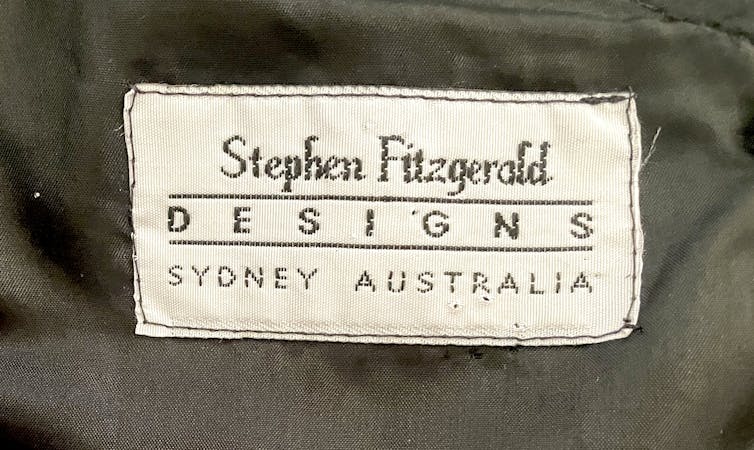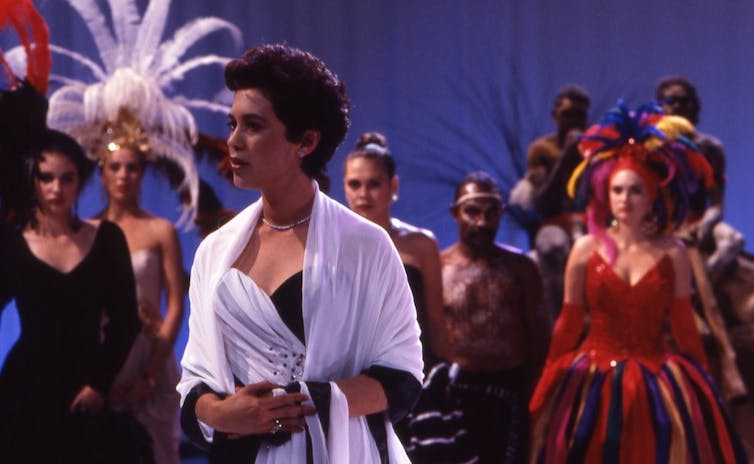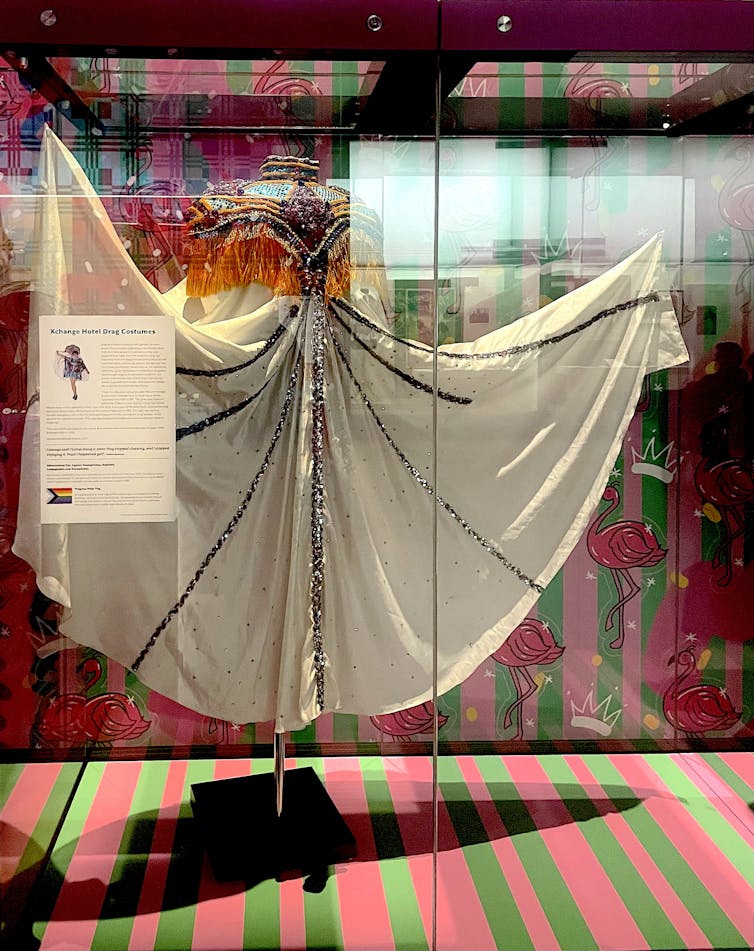Aboriginal and Torres Strait Islander readers are advised this article contains names and/or images of deceased people.
In August, I attended the Darwin Aboriginal Arts Fair to witness First Nations designers and artists showcase their fashions and win awards for their talents. From textile makers to artists and designers, their range of fashion designs highlighted the powerful talent and stories of First Nations communities around the country.
But while today’s brilliant designers are acknowledged for their hard work and dedication, there are some First Nations designers who remain relatively unheard of. This is often the case when a designer has passed and is not memorialised through numerous stories.
Several months ago, I learned about one such fashion and costume designer named Stephen FitzGerald (Yuin) through Euahleyai/Gamillaroi Distinguished Professor Larissa Behrendt. He came to my attention while speaking to Larissa, who shared stories about him and her experiences modelling his clothes.
I later found Stephen’s sister, Lee Spirit-Jones, and gained a detailed account of his life and work. Through the oral accounts from Larissa and Lee, this is what I learned about his momentous but short-lived career.
Lee Spirit-Jones
Fashion and couture
Stephen grew up in the Sydney suburb of La Perouse, with family hailing from the north and south coasts of New South Wales. He started his business in high school by designing and making clothes for family and friends.
Lee recalls that her brother “went to work at Christopher Essex before opening his own studio in Crown Street” in 1984. Following this opening, Stephen’s designs were often shown on charity runways with the likes of Adam Bennett, Harry Who, George Gross, Liz Davenport and Trent Nathan.

Treena Clark
Behrendt modelled Stephen’s clothes at some of these extravagant charity events, including one 1986 fundraiser that raised $13,680 for the Autistic Association.
Larissa told me Stephen was the first person she’d met who was Aboriginal and also a high-end fashion designer:
I did a couple of his shows for him, and I actually had a dress he designed. It was a beautiful black cocktail dress with earth-toned sequins on the front. I’d never had anything so beautiful.
Film and costume
In 1992, Stephen designed the costumes for the feature film Jindalee Lady directed by Bryan Syron, with music composed by Bart Willoughby and featuring the Bangarra Dance Theatre (with Raymond Blanco and Sylvia Blanco as lead dancers). It is the first feature film directed by an Aboriginal person.
Jindalee Lady tells the story of a First Nations fashion designer who is emerging in her career and is married to a non-Indigenous man. She later falls in love with an Aboriginal cinematographer, and a love triangle ensues.
Stephen was recommended as the costume designer by the renowned First Nations artist Bronwyn Bancroft (Bundjalung). He became the first First Nations fashion and costume designer to work on a feature film.
In the book Media Ethics, an Aboriginal Film and the Australian Film Commission, the director of Jindalee Lady, Brian Syron, was described as being “honoured to work with him, especially on the designs for the ‘fashion parade’”.
The fashion parade scene featured magnificent costumes depicting Australian birds. Both Larissa and Lee featured as models in the film. Larissa’s dress was inspired by the black cockatoo, and Lee’s by the rainbow lorikeet.

Tracey Schramm
Celebrities and performers
Stephen was often reported on in the media as a celebrity designer. In the world of television, Stephen provided garments for several productions including Star Search, and dressed studio personalities such as Kerri-Anne Kennerley.
He created a costume for drag performer Dorreen Manganini, aka Darren Budda-Dean (Kamilaroi and Gomeroi). This costume was worn and performed to the song Xanadu, by Olivia Newton-John and Electric Light Orchestra, at the Xchange Hotel in Melbourne/Narrm.

Treena Clark
Stephen also created the costumes for the popular cabaret show Les Girls and the male dance revue Man Power. As Lee told me:
I remember that we were contacted by Man Power […] as they were aware that we did the costumes for Les Girls […] Man Power wanted to have quality costumes that would work.
History is made by those who speak
Stephen FitzGerald was a fashion and costume design pioneer and should be recognised for his contributions. Unfortunately, he passed away at 32 and we lost the opportunity to experience more of his work.
In Larissa’s words:
He was such a talent. You know, then he passed away […] and no one ever talks about him anymore; it’s a real shame
As history is made and shared by those who speak, these wonderful and fond stories of Stephen provide rich insight into his life and work. Stephen lives on in the hearts and minds of those who loved him and the lucky few who still own some of his creations.







